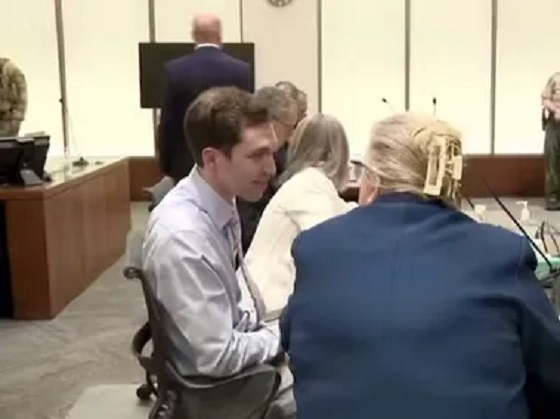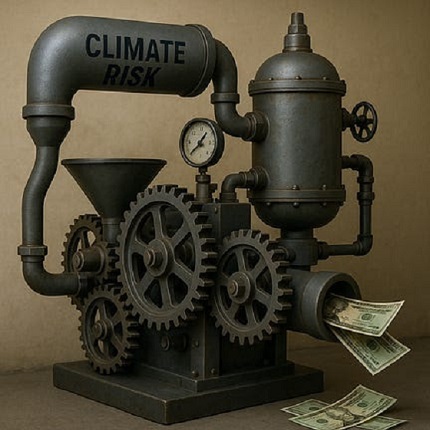Fraser Institute
Young people increasingly embrace conservatism

From the Fraser Institute
By Philip Cross
One of the most intriguing recent political trends in North America is the growing support for conservative parties among young people. Once a reliable source of overwhelming support for the elections of Barack Obama and Justin Trudeau, a rising share of the youth vote is trending towards candidates such as Donald Trump and Pierre Poilievre. Young people voting for conservative politicians could be dismissed as just a backlash against failed economic policies, but there are indications of a more fundamental shift to embracing at least some conservative values.
Canadian youths now support the Conservatives more than any other party, a development not seen in decades, if ever. According to an Abacus poll, 36 per cent of Canadians between 18 and 29 years old would support the Conservatives versus 27 per cent for the NDP and a paltry 19 per cent for the Liberals. Nor is support for Poilievre’s Conservatives just a backlash from the failing fortunes of youths under the Trudeau regime. An Environics polls found young people in Canada would vote for Trump more than any other age group: 28 per cent of Canadians between 18 and 34 years old prefer Trump versus 13 per cent for those 55 and over and 27 per cent between 35 and 54.
Faced with a health-care system that’s clearly broken in Canada, youths have fewer qualms about involving the private sector than older generations who were raised to believe that publicly-provided health care was a fundamental Canadian value. A recent poll by Leger published in Le Journal de Quebec found that 44 per cent of youths 18 to 34 years old support private delivery of health-care services, the mirror image of the views of people 55 and over who oppose it. Meanwhile, youths in the United States identify as having more conservative views than their parents even more than millennials did 20 years ago, with the largest shift among young men.
Rising support for conservative politicians and initiatives among young people reveals several trends. Most obviously is that many of today’s youths reject the radical woke agenda espoused by a small but vocal minority. When confronted with the reality of an economy that’s not generating the jobs, incomes and housing they desire, these youths prioritize results over ideology, especially immigrant youths who came to Canada for economic reasons. The importance attached to results is driving many youths even to question the usefulness of democracy. In his 2023 book The Fourth Turning Is Here, historian Neil Howe cites polls that one in four young Americans would prefer a dictatorial president unconstrained by Congress while only one in 10 Americans over age 65 agree.
Howe’s analysis is based on the proposition that historical movements move in cyclical ebbs and flows rather than by extrapolating straight lines. This is intuitively easy for me to understand after a career specializing in the study of business cycles. It’s well known that there are regular cycles in financial markets and the economy, partly because long periods of prosperity and bullish financial conditions lull the next generation into under-estimating the risks of a downturn. This complacency inevitably precipitates the sort of risky decisions that trigger a slump. As economist Hyman Minsky wrote, “Success breeds a disregard of the possibility of failure… Stability leads to instability. The more stable things become and the longer they are stable, the more unstable they will be when the crisis hits.”
Cyclical analysis is also useful in understanding political trends instead of just assuming history continues on a linear trajectory. For example, for years it seemed inevitable that support for Quebec separatism would rise inexorably until independence was achieved. Instead, support peaked during the 1995 referendum then steadily evaporated as younger generations had more pressing priorities than independence.
We see the same cyclical phenomenon play out in the political preferences of today’s youths, even if conservatives still represent only a minority and their longer-term commitment to conservative values remains uncertain. Instead of reinforcing the left-wing bias of youths that helped propel Obama and Trudeau to power, youths are reacting against the status quo that ignores their pocket-book concerns. These shifting attitudes of young people could help reshape North America’s political landscape in ways few would have thought possible a decade ago.
Author:
Business
Fuelled by federalism—America’s economically freest states come out on top

From the Fraser Institute
Do economic rivalries between Texas and California or New York and Florida feel like yet another sign that America has become hopelessly divided? There’s a bright side to their disagreements, and a new ranking of economic freedom across the states helps explain why.
As a popular bumper sticker among economists proclaims: “I heart federalism (for the natural experiments).” In a federal system, states have wide latitude to set priorities and to choose their own strategies to achieve them. It’s messy, but informative.
New York and California, along with other states like New Mexico, have long pursued a government-centric approach to economic policy. They tax a lot. They spend a lot. Their governments employ a large fraction of the workforce and set a high minimum wage.
They aren’t socialist by any means; most property is still in private hands. Consumers, workers and businesses still make most of their own decisions. But these states control more resources than other states do through taxes and regulation, so their governments play a larger role in economic life.
At the other end of the spectrum, New Hampshire, Tennessee, Florida and South Dakota allow citizens to make more of their own economic choices, keep more of their own money, and set more of their own terms of trade and work.
They aren’t free-market utopias; they impose plenty of regulatory burdens. But they are economically freer than other states.
These two groups have, in other words, been experimenting with different approaches to economic policy. Does one approach lead to higher incomes or faster growth? Greater economic equality or more upward mobility? What about other aspects of a good society like tolerance, generosity, or life satisfaction?
For two decades now, we’ve had a handy tool to assess these questions: The Fraser Institute’s annual “Economic Freedom of North America” index uses 10 variables in three broad areas—government spending, taxation, and labor regulation—to assess the degree of economic freedom in each of the 50 states and the territory of Puerto Rico, as well as in Canadian provinces and Mexican states.
It’s an objective measurement that allows economists to take stock of federalism’s natural experiments. Independent scholars have done just that, having now conducted over 250 studies using the index. With careful statistical analyses that control for the important differences among states—possibly confounding factors such as geography, climate, and historical development—the vast majority of these studies associate greater economic freedom with greater prosperity.
In fact, freedom’s payoffs are astounding.
States with high and increasing levels of economic freedom tend to see higher incomes, more entrepreneurial activity and more net in-migration. Their people tend to experience greater income mobility, and more income growth at both the top and bottom of the income distribution. They have less poverty, less homelessness and lower levels of food insecurity. People there even seem to be more philanthropic, more tolerant and more satisfied with their lives.
New Hampshire, Tennessee, and South Dakota topped the latest edition of the report while Puerto Rico, New Mexico, and New York rounded out the bottom. New Mexico displaced New York as the least economically free state in the union for the first time in 20 years, but it had always been near the bottom.
The bigger stories are the major movers. The last 10 years’ worth of available data show South Carolina, Ohio, Wisconsin, Idaho, Iowa and Utah moving up at least 10 places. Arizona, Virginia, Nebraska, and Maryland have all slid down 10 spots.
Over that same decade, those states that were among the freest 25 per cent on average saw their populations grow nearly 18 times faster than those in the bottom 25 per cent. Statewide personal income grew nine times as fast.
Economic freedom isn’t a panacea. Nor is it the only thing that matters. Geography, culture, and even luck can influence a state’s prosperity. But while policymakers can’t move mountains or rewrite cultures, they can look at the data, heed the lessons of our federalist experiment, and permit their citizens more economic freedom.
Business
Brutal economic numbers need more course corrections from Ottawa

From the Fraser Institute
By Matthew Lau
Canada’s lagging productivity growth has been widely discussed, especially after Bank of Canada senior deputy governor Carolyn Rogers last year declared it “an emergency” and said “it’s time to break the glass.” The federal Liberal government, now entering its eleventh year in office, admitted in its recent budget that “productivity remains weak, limiting wage gains for workers.”
Numerous recent reports show just how weak Canada’s productivity has been. A recent study published by the Fraser Institute shows that since 2001, labour productivity has increased only 16.5 per cent in Canada vs. 54.7 per cent in the United States, with our underperformance especially notable after 2017. Weak business investment is a primary reason for Canada’s continued poor economic outcomes.
A recent McKinsey study provides worrying details about how the productivity crisis pervades almost all sectors of the economy. Relative to the U.S., our labour productivity underperforms in: mining, quarrying, and oil and gas extraction; construction; manufacturing; transportation and warehousing; retail trade; professional, scientific, and technical services; real estate and rental leasing; wholesale trade; finance and insurance; information and cultural industries; accommodation and food services; utilities; arts, entertainment and recreation; and administrative and support, waste management and remediation services.
Canada has relatively higher labour productivity in just one area: agriculture, forestry, fishing and hunting. To make matters worse, in most areas where Canada’s labour productivity is less than American, McKinsey found we had fallen further behind from 2014 to 2023. In addition to doing poorly, Canada is trending in the wrong direction.
Broadening the comparison to include other OECD countries does not make the picture any rosier—Canada “is growing more slowly and from a lower base,” as McKinsey put it. This underperformance relative to other countries shows Canada’s economic productivity crisis is not the result of external factors but homemade.
The federal Liberals have done little to reverse our relative decline. The Carney government’s proposed increased spending on artificial intelligence (AI) may or may not help. But its first budget missed a clear opportunity to implement tax reform and cuts. As analyses from the Fraser Institute, University of Calgary, C.D. Howe Institute, TD Economics and others have argued, fixing Canada’s uncompetitive tax regime would help lift productivity.
Regulatory expansion has also driven Canada’s relative economic decline but the federal budget did not reduce the red tape burden. Instead, the Carney government empowered cabinet to decide which large natural resource and infrastructure projects are in the “national interest”—meaning that instead of predictable transparent rules, businesses must answer to the whims of politicians.
The government has also left in place many of its Trudeau-era environmental regulations, which have helped push pipeline investors away for years. It is encouraging that a new “memorandum of understanding” between Ottawa and Alberta may pave the way for a new oil pipeline. A memorandum of undertaking would have been better.
Although the government paused its phased-in ban on conventionally-powered vehicle sales in the face of heavy tariff-related headwinds to Canada’s automobile sector, it still insists that all new light-duty vehicle sales by 2035 must be electric. Liberal MPs on the House of Commons Industry Committee recently voted against a Conservative motion calling for repeal of the EV mandate. Meanwhile, Canadian consumers are voting with their wallets. In September, only 10.2 per cent of new motor vehicle sales were “zero-emission,” an ominous18.2 per cent decline from last year.
If the Carney government continues down its current path, it will only make productivity and consumer welfare worse. It should change course to reverse Canada’s economic underperformance and help give living standards a much-needed boost.
-

 Alberta2 days ago
Alberta2 days agoThe Recall Trap: 21 Alberta MLA’s face recall petitions
-

 illegal immigration2 days ago
illegal immigration2 days agoUS Notes 2.5 million illegals out and counting
-

 International2 days ago
International2 days agoTyler Robinson shows no remorse in first court appearance for Kirk assassination
-

 Daily Caller1 day ago
Daily Caller1 day ago‘There Will Be Very Serious Retaliation’: Two American Servicemen, Interpreter Killed In Syrian Attack
-

 Business1 day ago
Business1 day agoInflation Reduction Act, Green New Deal Causing America’s Energy Crisis
-

 Media19 hours ago
Media19 hours agoReporters determined to drive their industry and its reputation into the abyss one Tweet at a time
-

 Automotive2 days ago
Automotive2 days agoPoliticians should be honest about environmental pros and cons of electric vehicles
-

 Crime19 hours ago
Crime19 hours agoTerror in Australia: 12 killed after gunmen open fire on Hanukkah celebration










